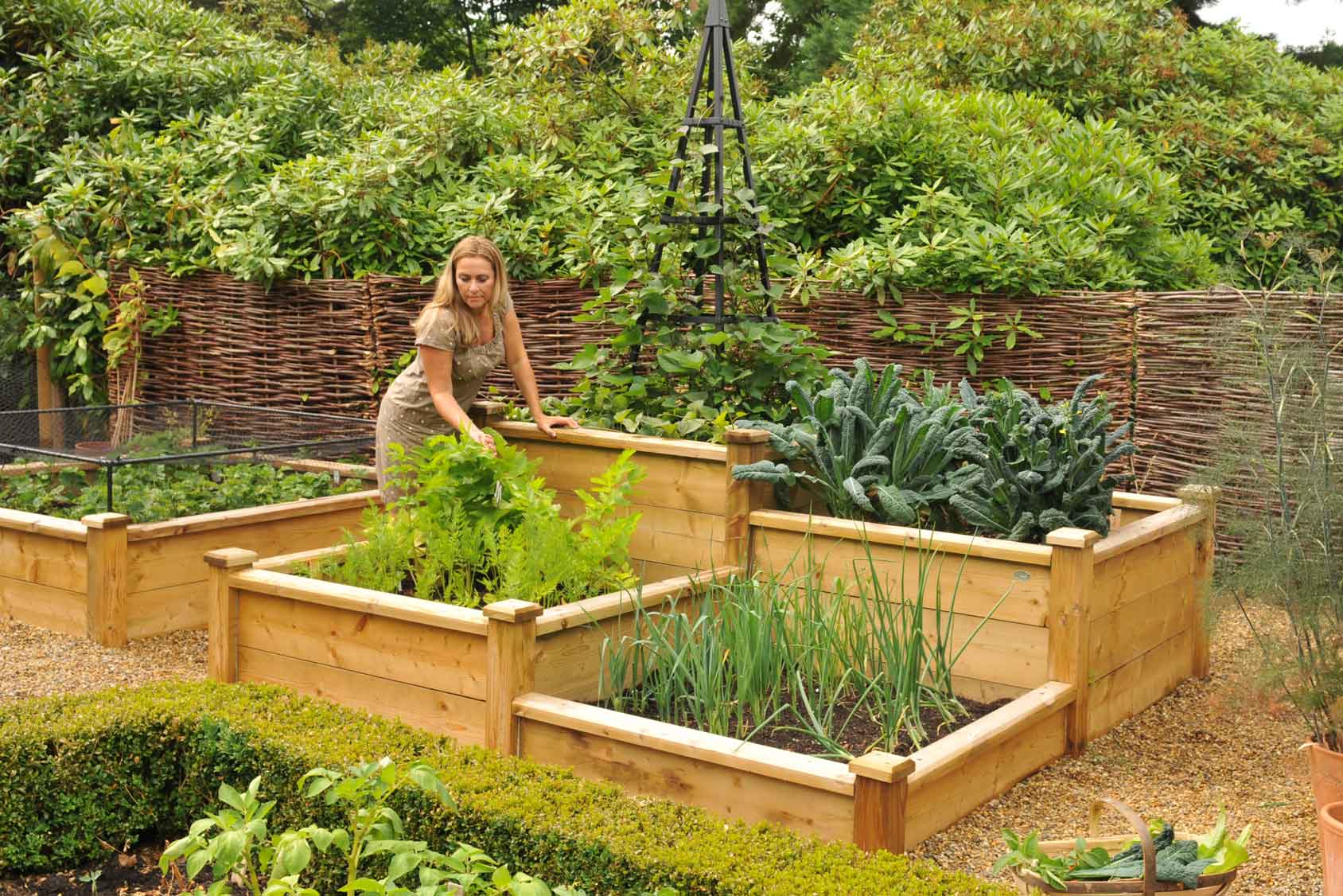For gardeners wanting to build their own raised beds, wood is often the first material considered. Compared to stone, concrete, or metal, wood tends to be more affordable and easier for the home DIY builder to work with using basic tools
But not all kinds of wood are the same when it comes to how long they last in the garden. For how long your raised beds last before they need to be rebuilt, the type of wood you choose is very important.
In this guide, we’ll cover the key factors to consider when choosing the best wood for raised garden beds
Why Use Wood for Raised Beds?
There are several advantages that make wood a popular choice:
- Relatively low cost
- Wide availability
- Easy to construct with basic tools
- Customizable sizing and shapes
- Natural appearance fits with gardens
Wood does have some potential drawbacks to weigh as well:
- Less durable than concrete, metal, etc.
- Can warp, rot, or degrade over time
- May leach chemicals if treated
Overall though, using properly prepared wood matched to your climate is a smart option for most raised bed gardening needs.
Key Factors When Selecting Wood
To choose the best wood type and boards for your raised beds, keep these key factors in mind:
Durability
Seeking out wood known for its natural rot resistance and waterproofing properties ensures the longest structural life. Some woods have natural compounds like tannins that protect them.
Cost
While budget is a consideration, it’s best to avoid the cheapest boards which are often too thin or made from wood that decays quickly.
Availability
Opt for abundant local species as they’re most affordable and sustainable. Exotic imported woods are pricier and not eco-friendly.
Sustainability
Choose responsibly harvested lumber, if possible from suppliers who replant trees. Reclaimed wood works too.
Untreated
Don’t use pressure treated lumber which can leach chemicals into garden beds. Untreated is safest.
Best Wood Types for Raised Beds
Here are some top picks for long-lasting, rot-resistant woods:
Cedar
Cedar is a favorite choice due to its natural weatherproofing oils. Red cedar is more durable than white. It resists rot, decay, and insects. A cedar raised bed can last over a decade.
Redwood
Redwood is equally decay resistant and sturdy. Its tannins make it resistant to bugs and moisture. Redwood is common in western North America.
Cypress
Cypress is naturally resistant to pests and moisture. This versatile wood works for all outdoor projects, not just raised beds. It’s popular in southern areas.
Hemlock
Hemlock’s coarse grain pattern gives it excellent weather resistance. It holds up well over years of exposure to rain, snow, and soil.
Teak
Teak has a high oil content that makes it incredibly durable outdoors. This tropical hardwood is excellent for raised beds but is an expensive import.
Pine
Pressure treated pine is common but avoid it. Untreated pine is more affordable than cedar but less decay resistant without tannins. It requires replacing more frequently.
No matter which wood you select, always check for quality. Avoid boards with large knots, cracks, or other defects. Opt for the highest grade boards within your budget.
Key Considerations for Wood Raised Beds
Follow these tips for best results when building and using your wooden raised beds:
-
Use thick boards, at least 2 inches if possible. Thinner wood warps and fails faster.
-
Elevate beds off the ground using bricks, blocks, or gravel for airflow and drainage.
-
Line inside of bed with landscape fabric to prevent grass and weeds from below.
-
Seal outdoor wood with eco-friendly treatments to repel moisture. Re-coat annually.
-
Monitor beds for sagging corners, rot, and wood degradation over time.
-
Pre-drill holes for screws to prevent splitting old or brittle woods.
-
Expect to rebuild or replace wood beds every 5-15 years depending on wood quality.
With proper selection, construction, and maintenance, a wood raised bed can provide many seasons of productive gardening before needing to be rebuilt. Pairing naturally decay resistant woods with smart building practices will extend the longevity substantially.
Alternatives to Wood for Raised Beds
While wood is a popular raised bed building material, it’s not the only option. Here are some other possibilities if wood doesn’t work for you:
- Recycled plastic lumber
- Concrete blocks
- Poured concrete
- Stone, brick, or block
- Metal framing (steel, aluminum, galvanized)
- Bags or containers
Each material has pros and cons in terms of durability, cost, appearance, and weight. Shop around to find one that best fits your climate, skills, budget and garden style.
With this guidance, you can select the ideal wood or material to create durable, safe raised beds tailored exactly to your gardening needs and space. Happy building and growing!
Wooden Garden Boxes: The Ultimate Guide to Choosing the Best Wood Species for Raised Bed Planters
FAQ
What kind of wood should you use for raised beds?
What wood should not be used in a raised garden bed?
What is the best material to use for a raised garden bed?
Should you use treated or untreated wood for raised garden beds?


